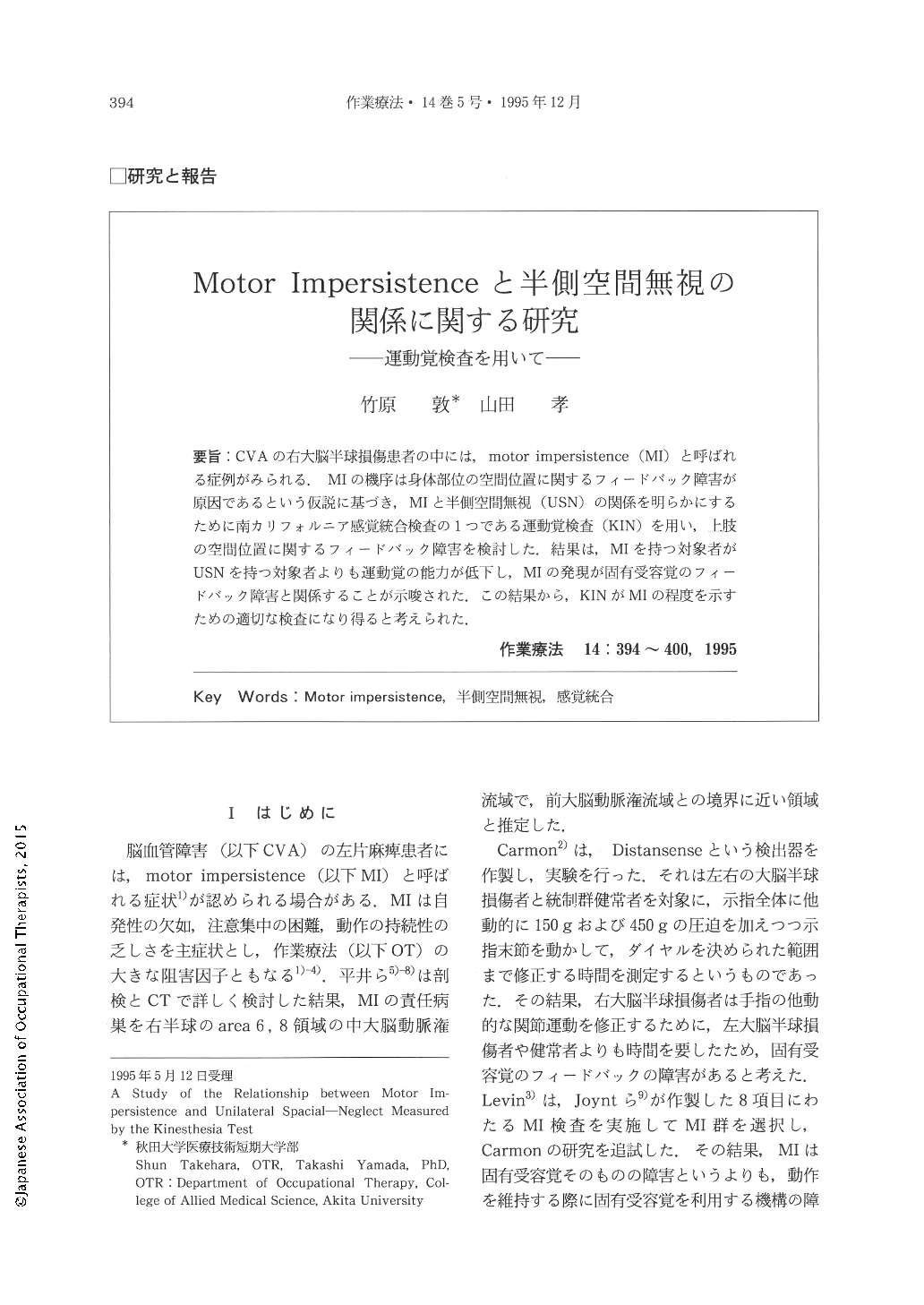Japanese
English
- 販売していません
- Abstract 文献概要
- 1ページ目 Look Inside
- 参考文献 Reference
要旨:CVAの右大脳半球損傷患者の中には,motor impersistence(MI)と呼ばれる症例がみられる.MIの機序は身体部位の空間位置に関するフィードバック障害が原因であるという仮説に基づき,MIと半側空間無視(USN)の関係を明らかにするために南カリフォルニア感覚統合検査の1つである運動覚検査(KIN)を用い,上肢の空間位置に関するフィードバック障害を検討した.結果は,MIを持つ対象者がUSNを持つ対象者よりも運動覚の能力が低下し,MIの発現が固有受容覚のフィードバック障害と関係することが示唆された.この結果から,KINがMIの程度を示すための適切な検査になり得ると考えられた.
Motor Impersistence (MI) is specifically associated with the damage of right hemisphere in patients with cerebrovascular diseases. The patient having MI has difficulty for occupational therapy intervention, because his/her daily living skills and the independence of walking are decreased due to such symptoms as decrease of attention span and lack of voluntary operation. From the previous studies, it is assumed that MI is the difficulty of feedback of the spacial position of the body parts, and having some kinds of symptoms of sensory integration.
MI is frequently accompanied with unilateral spacial neglect (USN). In order to clarify the relation between MI and USN, we examined the feedback ability of the spacial positioning of the right arm by using Kinesthesia (KIN), one of the Southern California Sensory Integration Tests (SCSIT). From this study, it was revealed that MI disturbed this feedback abilities.

Copyright © 1995, Japanese Association of Occupational Therapists. All rights reserved.


